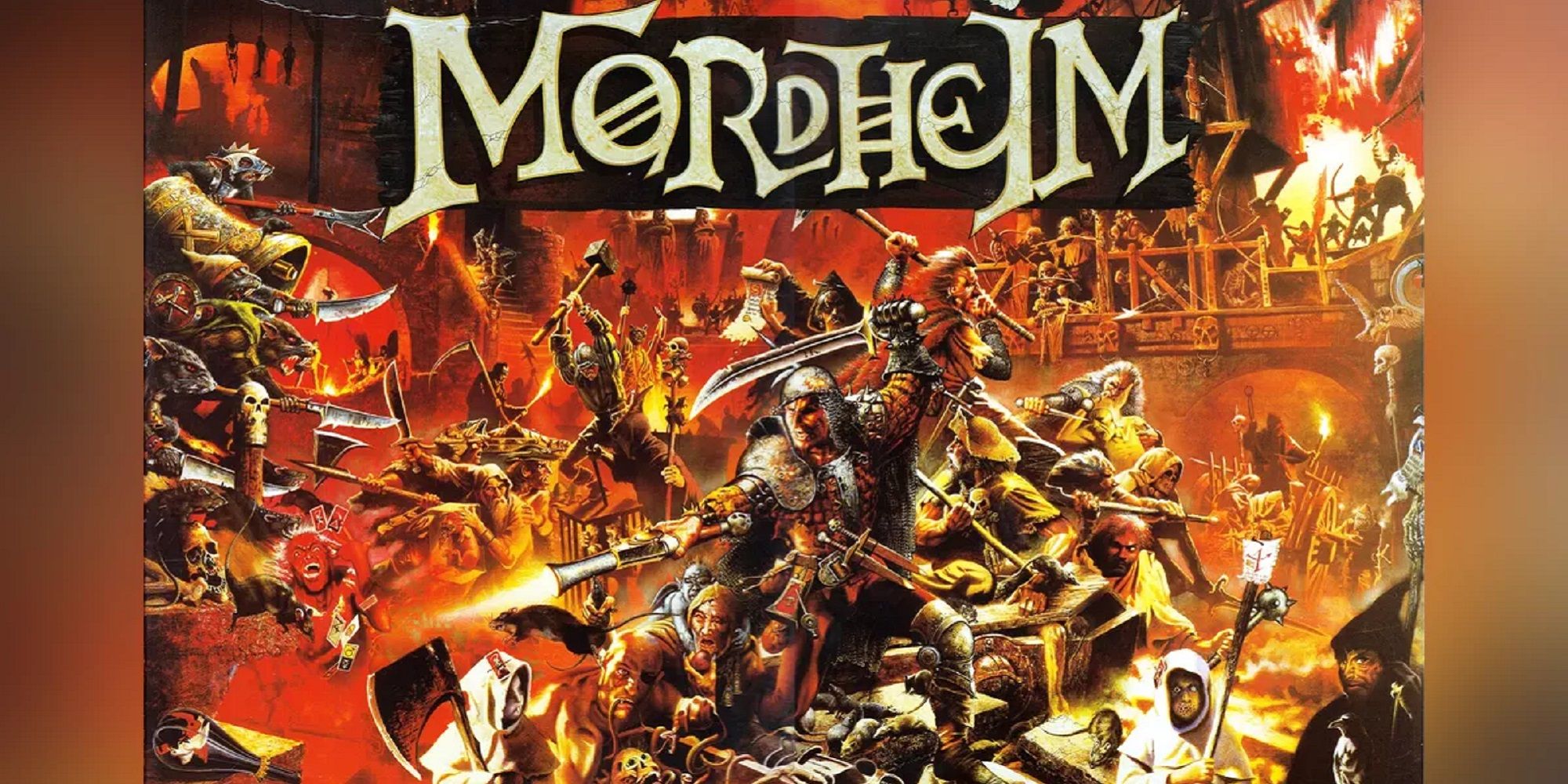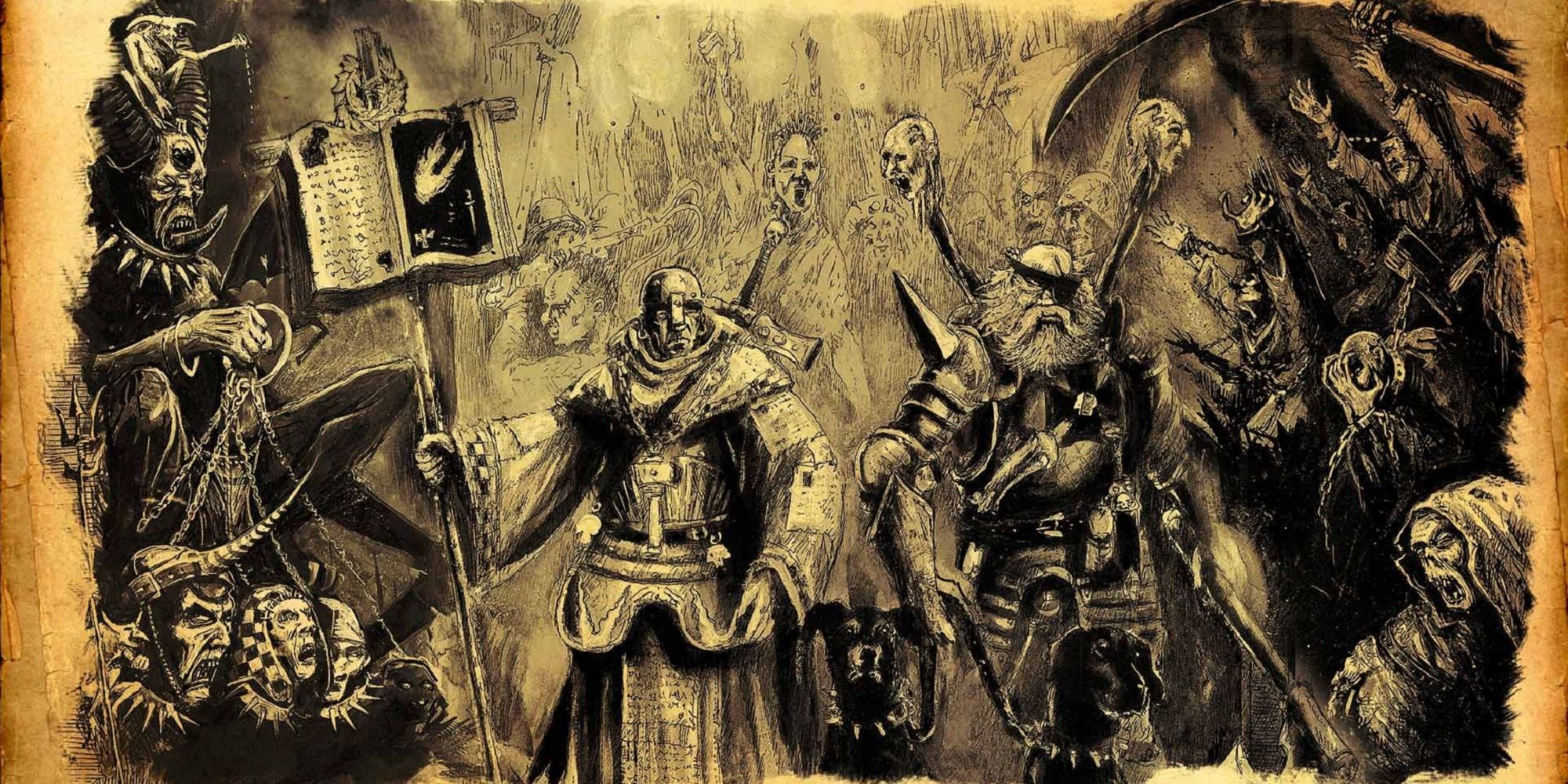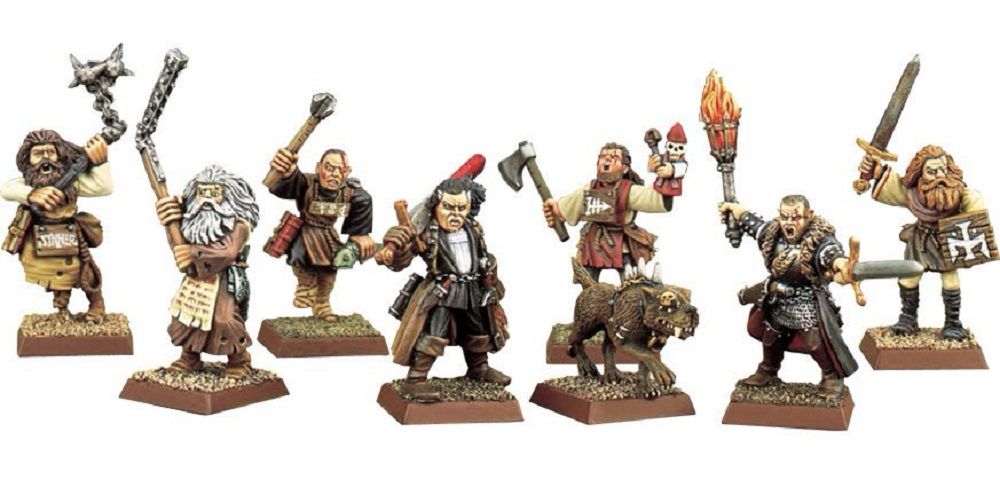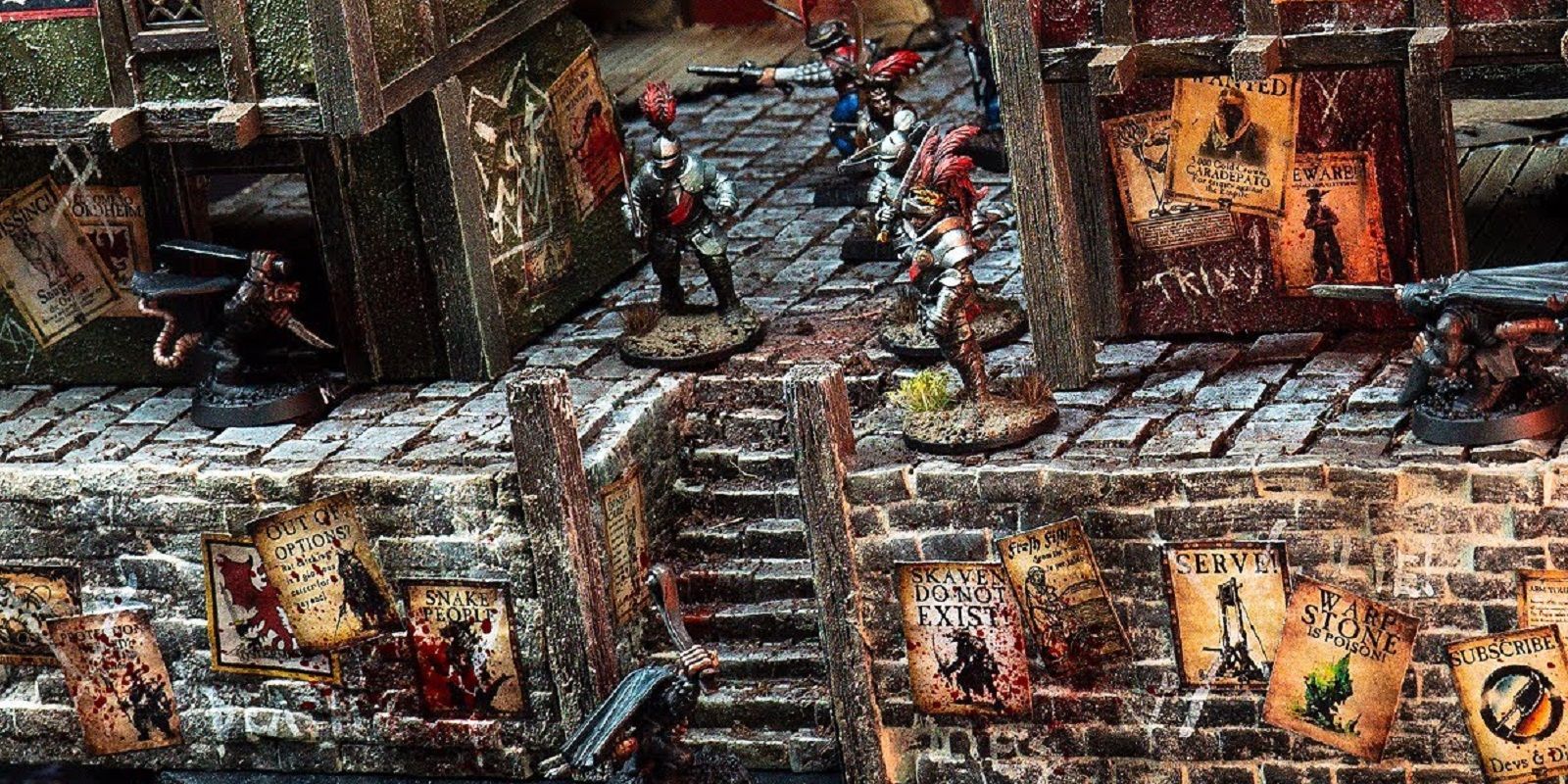Spend any time in a Warhammer community and you’ll hear the word Mordheim bandied about. It’s a term discussed like an old friend, someone who had a legendary presence in the pub but has since moved on. Nobody’s quite sure where they went, but they don’t hang around here any more. But everyone remembers the stories they told for the price of a round, everyone remembers the drunken hijinks you got up to after a few too many, and everyone wonders when they’re coming back. But what is Mordheim, other than a legend whispered between the older generation of wargamers? And why does everyone love it so much?
Mordheim came out in 1999, and was set in the same year in the Old World. This puts it around 500 years before the events of Warhammer Fantasy, so all the armies you know and love are around, but the characters aren’t necessarily alive. They’re also not necessarily in Mordheim, the capital of Ostermark. A meteor of Warpstone has hit the city, destroying almost everything in the process. However, that same Warpstone is incredibly valuable, so your job is to assemble a team of characters and bodyguards to collect as much of it as possible and escape the City of the Damned alive.
You can tell from that description that the game is pretty gritty. Harkening back to the grimdarkness of Warhammer Fantasy Roleplaying (which likely inspired the setting of 40k too), rather than the more cartoonish and fun Warhammer Fantasy of the ‘90s, Mordheim was a gritty game for grizzled gamers. The designers also cite the Y2K and Mayan calendar conspiracies as design inspirations, so perhaps the mirror to real-world situations called players to Mordheim’s spiked gates.
There’s a comedy to Mordheim that balances the darkness, however. Jokes vary from dark humour about the aura of death surrounding the city, to the absurd. Why is everyone obsessed with fish? This extended far outside of the rulebook, with comics based on two original characters Ulli and Marquand appearing frequently in Warhammer Monthly and gaining a cult following of their own.
The iconic Mordheim flavour was enhanced by the artwork of John Blanche, who decorated the pages of the rulebook with grimy illustrations. Mostly black and white instead of his usual sepia tones, the images still draw you into the city and envelop you in its darkness.
However, it wasn’t just the setting that makes players remember Mordheim so fondly. The game itself blended the narrative play of D&D with the boxed game systems that Games Workshop had made a name for itself with the likes of Necromunda, Space Hulk, and Blood Bowl. The stories you could tell on the tabletop were brilliant, from lame Skaven Gutterrunners hellbent on revenge rising through the ranks á la an Orc Captain in Shadow of Mordor’s Nemesis System, to scrawny teenage recruits gaining the leadership skills of an Empire General and leading your warband to unlikely victory after unlikely victory. But whatever you do, don’t put an Elf and a Dwarf in the same company. Trust me.
Things didn’t always go in your favour, and the brutal RNG of Mordheim scuppered your plans more often than your enemies or fellow players. There’s a lot of randomness in Mordheim, to the extent that it often feels unfair, but players embraced it. After all, it’s called the City of the Damned for a reason.
What gave Mordheim such cultural longevity, however, was its DIY nature. As well as creating your own adventures as you played – unlike Space Hulk’s narrative missions or Blood Bowl’s pitch-limited shenanigans – players were encouraged to convert their miniatures, build their own cardboard terrain, and make the game their own.
The rulebook included conversion suggestions for your warband, and even taught players how to make realistic ruined buildings from cardboard. Of course, people took this to new levels using modeling foam and water effects, but it’s impressive that Games Workshop went out of its way to encourage creativity in this way. The writing team of Alessio Cavatore, Tuomas Pirinen, and Rick Priestley created a world people wanted to dive into, Blanche gave some visual inspiration to get your creative juices going, and Games Workshop provided the tools to do it yourself.
This is probably why Mordheim hasn’t returned. Many of its contemporaries have been graced with new editions or spiritual successors over the past decade, but the DIY nature of Mordheim is incompatible with Games Workshop’s current business model. If it wanted a game with a crowded city board, it would want to sell the buildings, and it would adorn them with skulls and Sigmarite insignia so that it could charge more than its competitors and so players couldn’t use them in other games systems or historical tabletop battles.
The levels of player ingenuity that Mordheim fosters are disparaged by New Games Workshop in favour of making everything into a product. The company does a lot right these days, but eschewing the player-first creativity of Mordheim in order to put more products in boxes is unforgivable. While you could always download the fan-updated living rulebook from the internet, the original box set goes for hundreds of dollars these days, and it’s high time Games Workshop capitalised on this demand and gave us a new version. Next year is the game’s 25th anniversary, after all.




